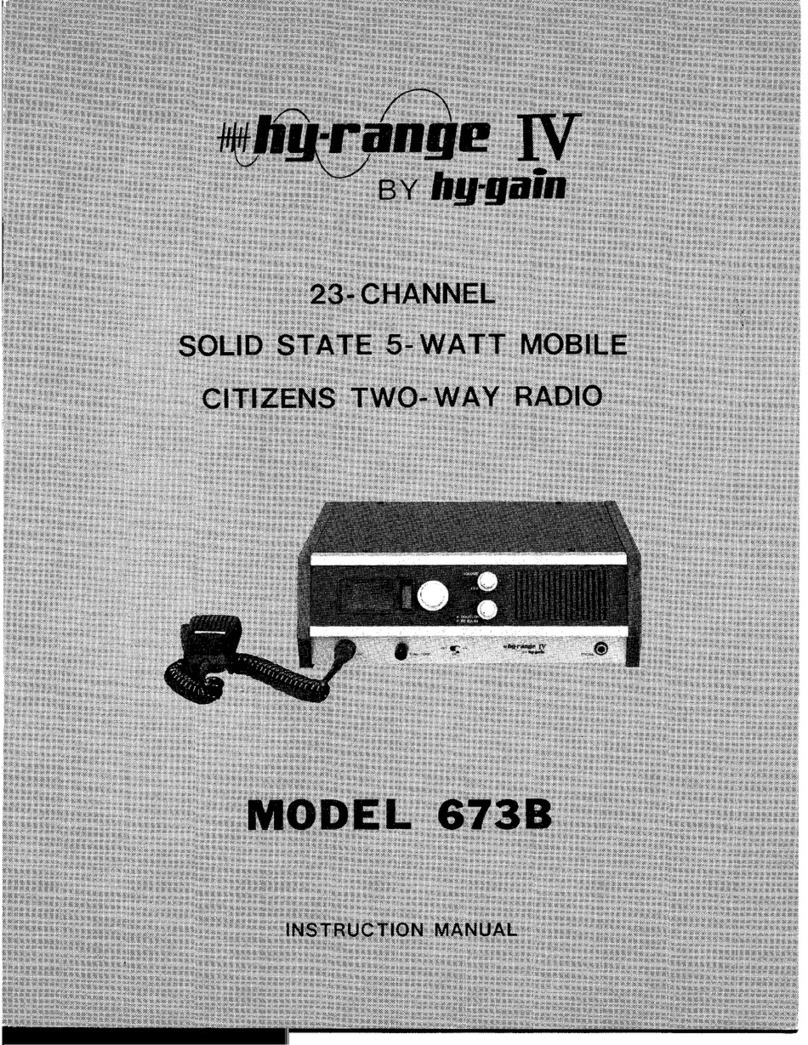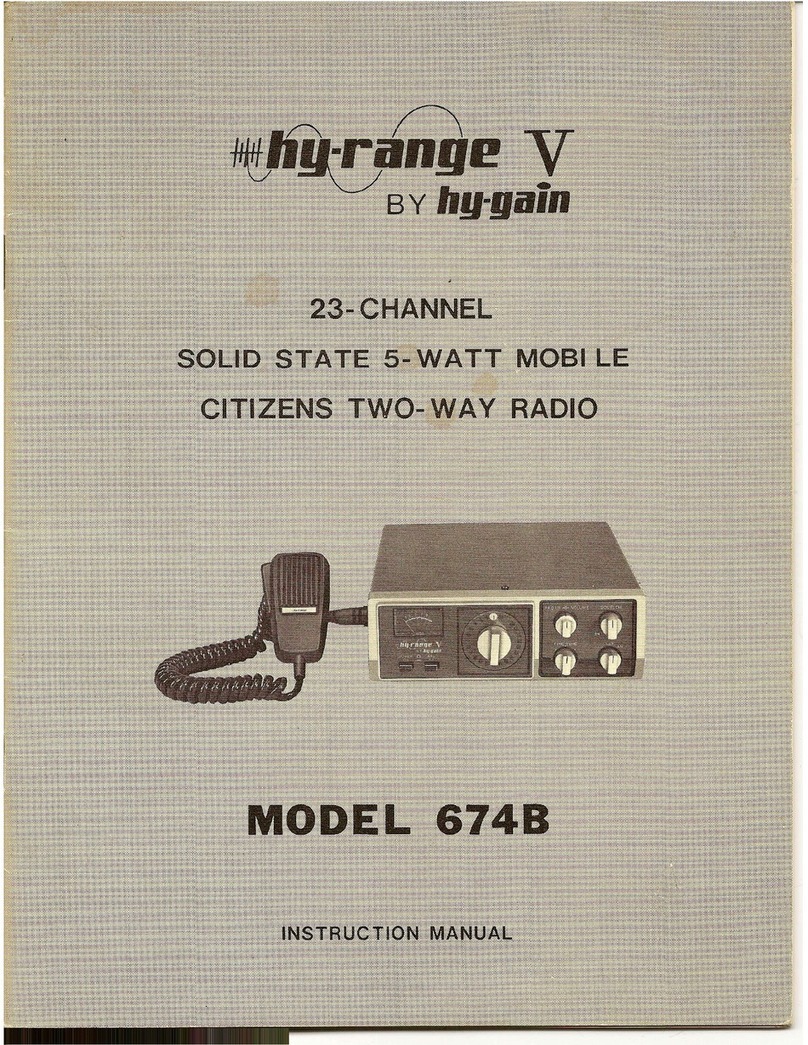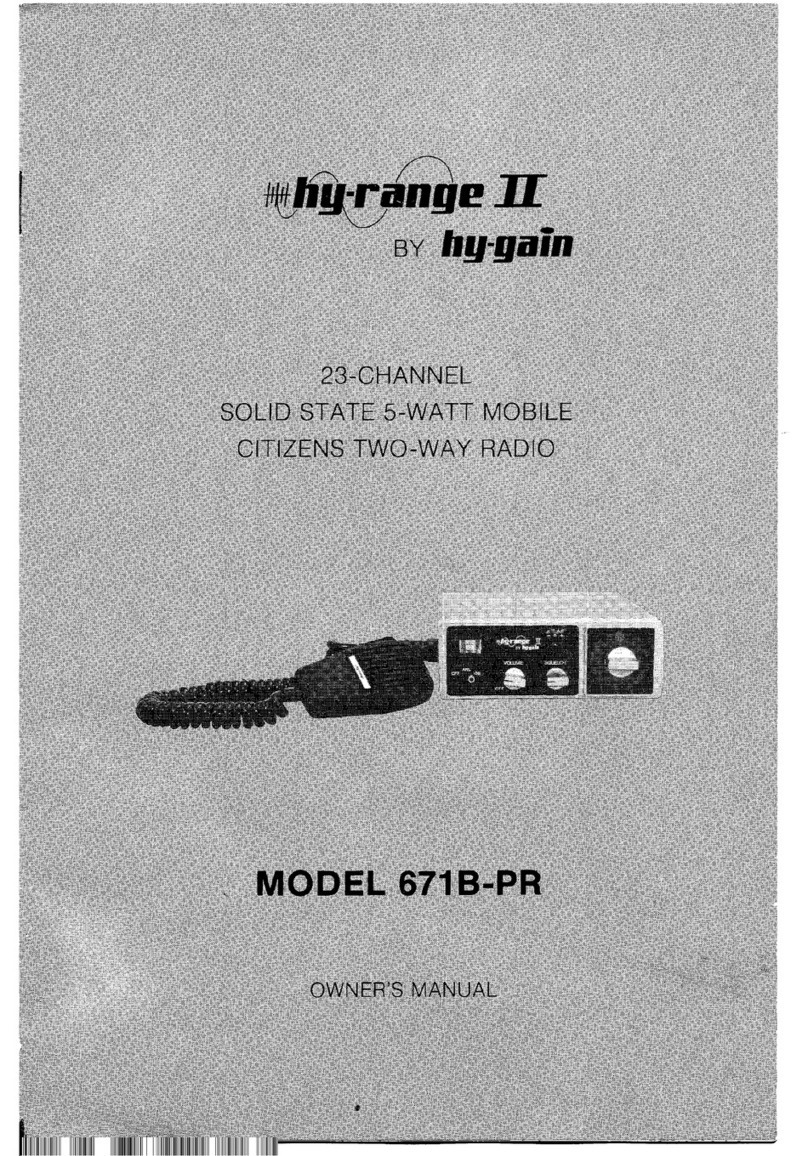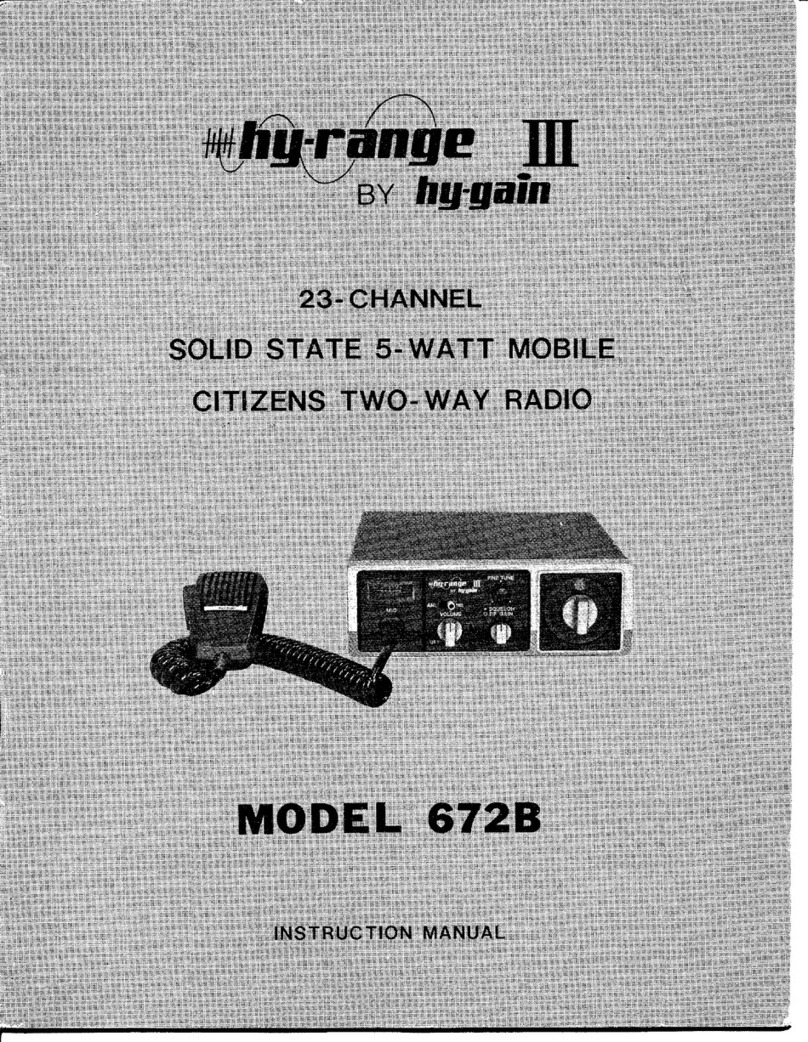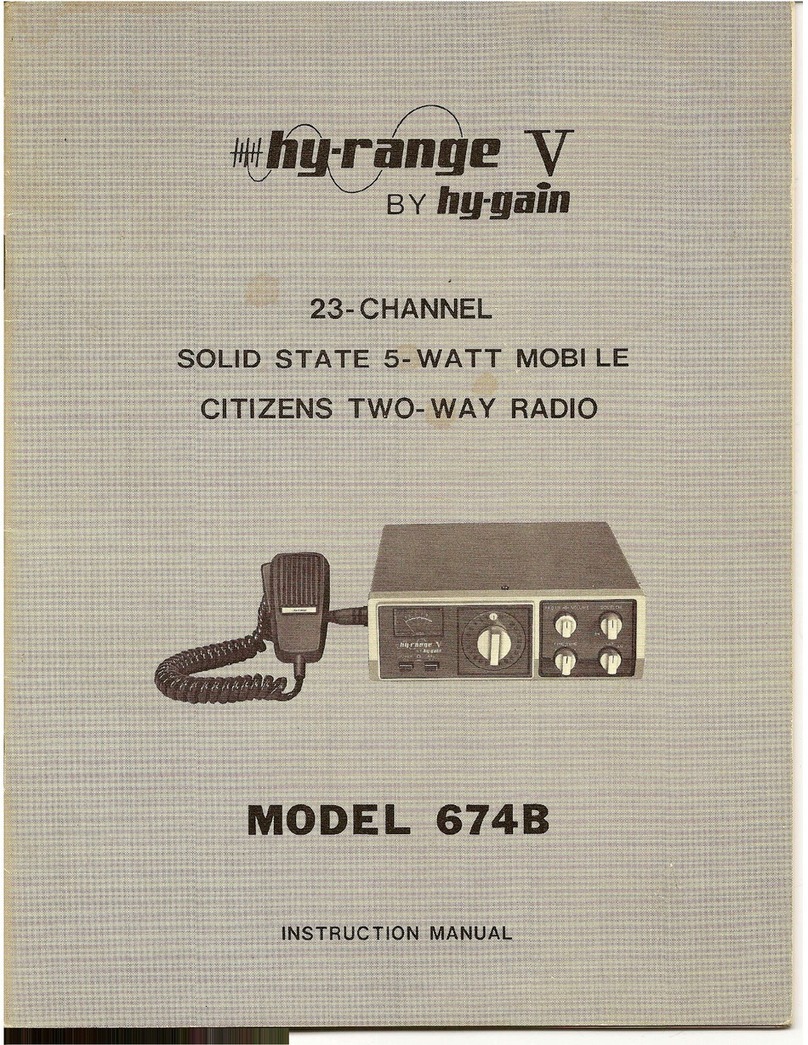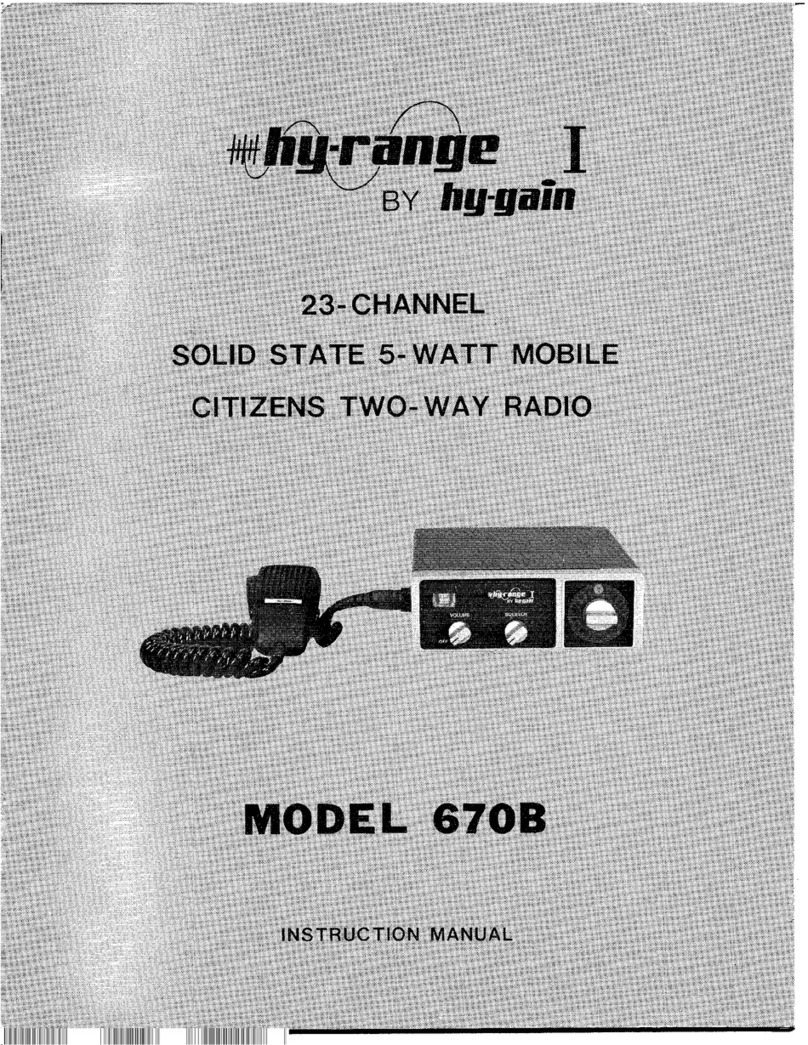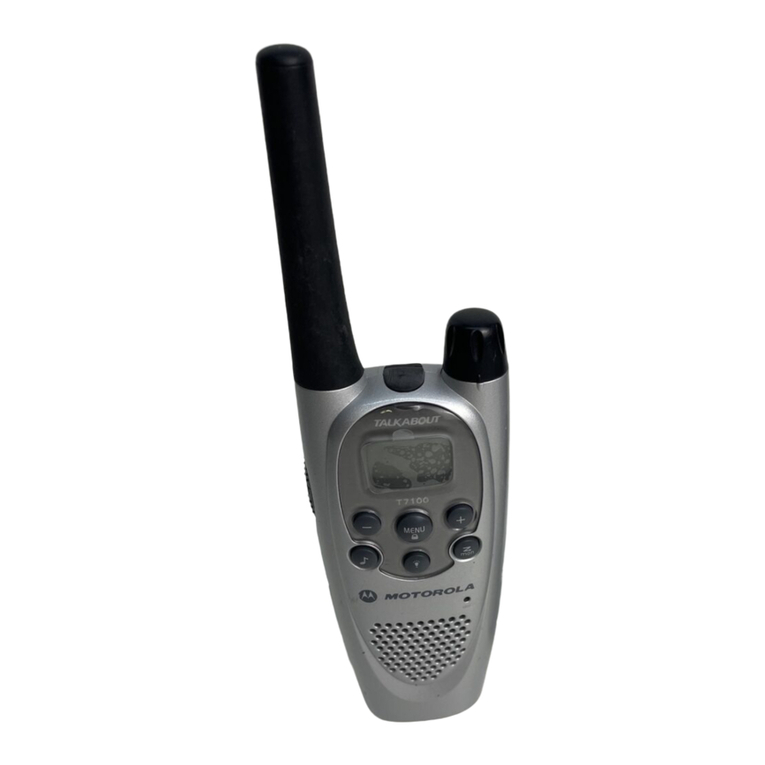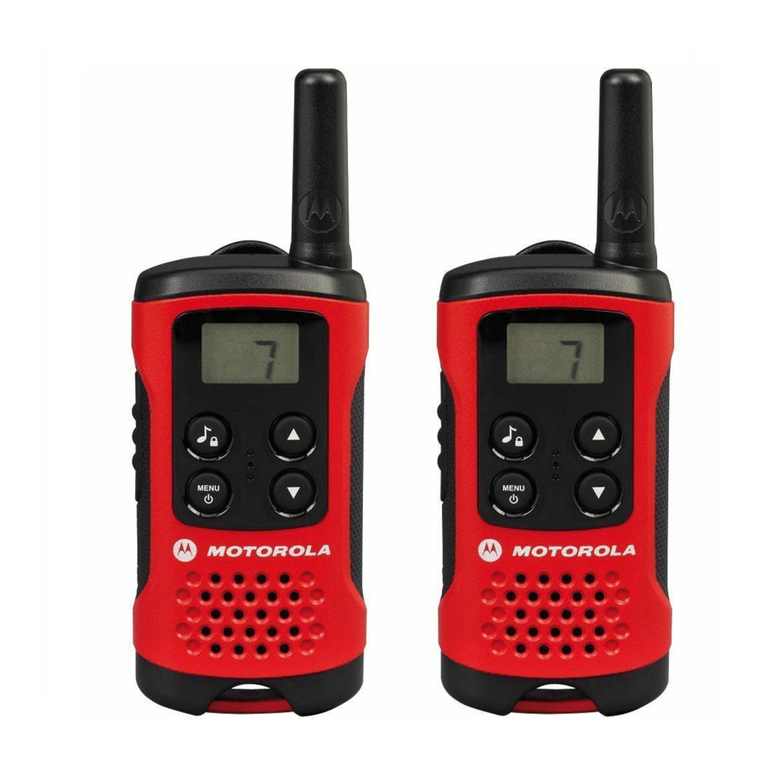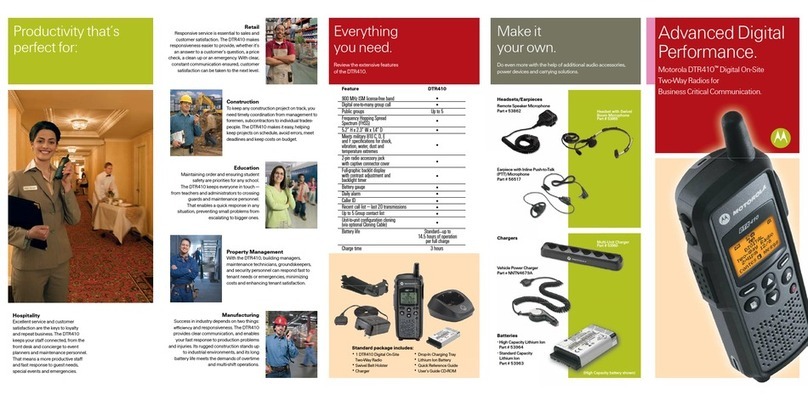
installations
Installation
Plan the location of the transceiver and the microphone bracket before starting the
installation. Select a location that is convenient for operation and does not interfère
with the driver or passengers in the vehicle. The transceiver is usually mounted under-
neath the dash panel.
Mounting and Connections
The transceiver is supplied witn a universal mounting bracket. The transceiver is held in
the bracket by two bolts permitting adjustment to the most convenient angle. The
bracket must be mounted with the machine screws and the nuts supplied. The mounting
must be mechanically strong and also provide a good electrical contact to the chassis of
the vehicle. Proceed as follows to mount the transceiver.
1. After you hâve determined the most convenient location in your vehicle, hold the
transceiver with mounting bracket in the exact location desired. f nothing interfères
with mounting it in the desired location, remove the mounting bracket and use it as a
template to mark the location for the mounting bolts. Before drilling the holes, make
sure nothing interfères with the installation of the mounting bolts.
2. Connect the antenna cable plug to the standard réceptacle on the rear panel. Most
CB antennas are terminated with a type PL-259 plug and mate with the réceptacle of
the transceiver.
3. Connect tne power cord plug to the de power socket on rear panel.
4. Negative Ground Systems. Almost ail domestic mobiles and trucks are negative
grounded. The red lead at the end of the power cord connects to the positive pole of
the battery or electrical system, and the black lead connects to the negative pole of the
battery or suitable chassis ground.
5. Positive Ground Systems. n positive ground system mobile, connect the red lead
to the positive pole of the battery or suitable chassis ground, and the black lead to the
negative pole of the battery or electrical system.
6. Mount the microphone bracket to dashboard or other convenient location.
Ignition Noise Interférence
Use of the mobile transceiver at low level signal condition is normally limited by the
presence of electrical noises. The primary source of noise in an automobile installation
is from the generator and ignition system in the vehicle. Under most operating con
ditions, when signal level is adéquate, the background noise does not present a serious
problem. Also when extremely low level signais are being received the transceiver may be
operated with the vehicle engine off. The unit requires very low current and therefore
will not significantly discharge the battery. Even though your transceiver has a noise
blanker, in some installations ignition noise interférence may be high enough to make
good communications impossible. The electrical noise may corne from several sources.
Many possibilities exist and variations between vehicles require different solutions to
reduce the noises. Consult with your dealer or two-way radio technician for help in
locating and correcting the source of severe noise interférence.
2
